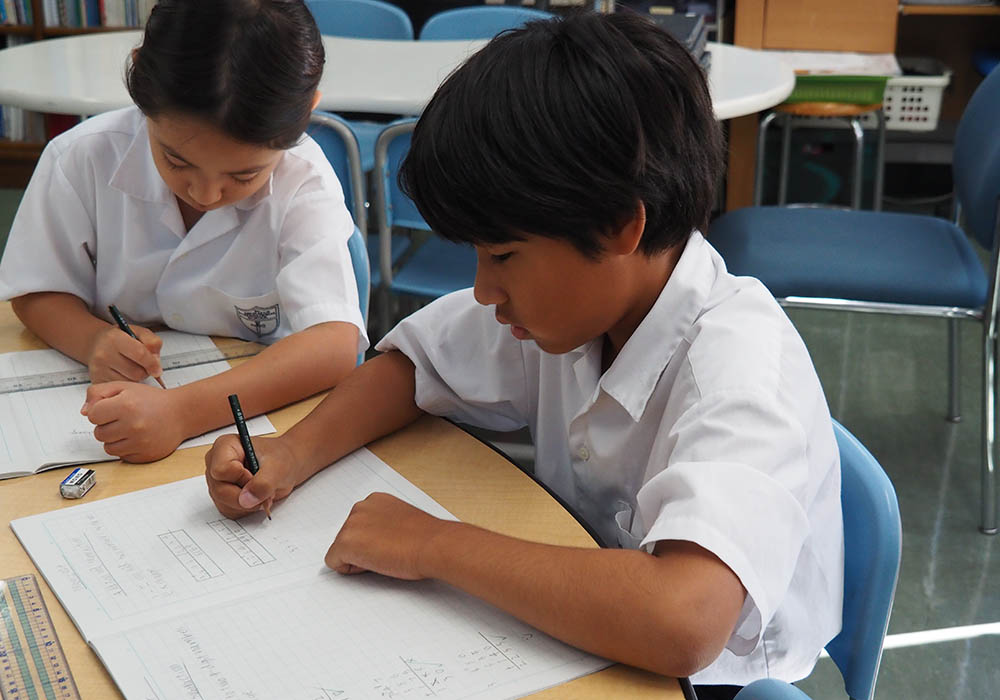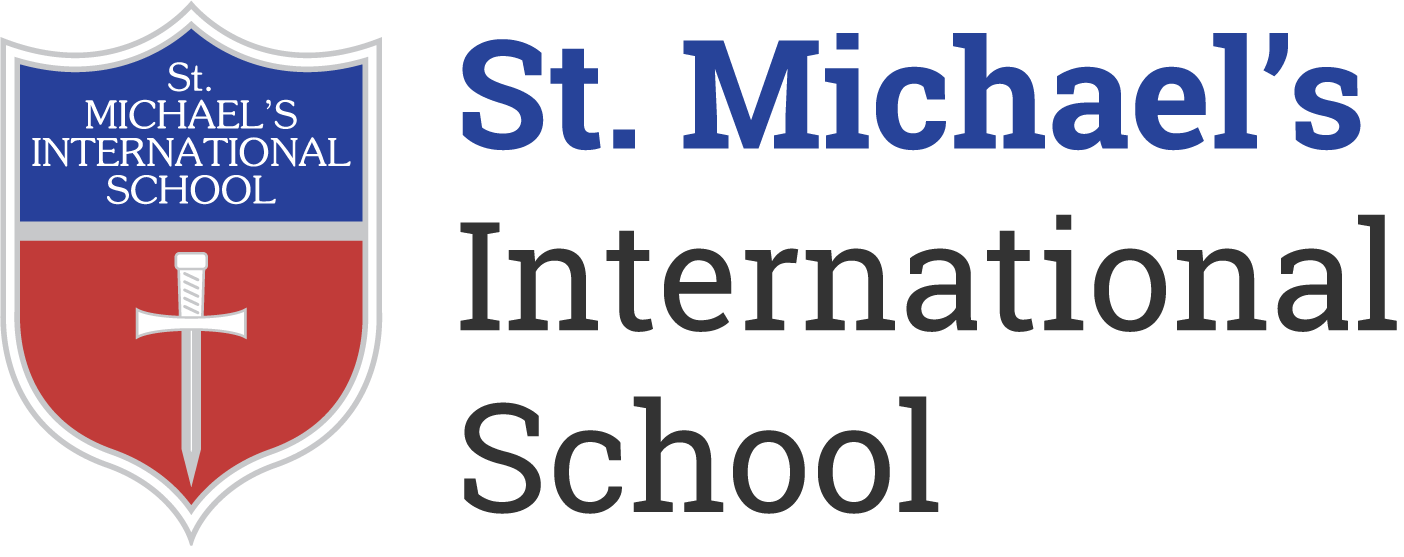Mathematics

Mathematics Curriculum
At St. Michael’s, we follow the UK Primary Framework for Mathematics. This framework underpins the majority of teaching of Mathematics at this school as it is considered to lay a strong foundation for future competency. From Years One to Six, St. Michael’s International School views Mathematics as a core subject and teaches a hierarchy of skills and concepts under the following subject areas:
1- Using and applying mathematics
2- Counting and understanding number
3- Knowing and using number facts
4- Calculating
5- Understanding shape
6- Measuring
7- Handling data
These seven areas (or strands) are taken from the UK Primary Framework for Mathematics. This framework underpins the majority of teaching of Mathematics at this school as it is considered to lay a strong foundation for future competency. Children deepen their understanding of mathematics through exploring practical real-life applications, linked where possible to other aspects of the curriculum. The use of technology is built into Mathematics teaching where appropriate, with chromebooks, iPads and class Smart Board being used during Mathematics Lessons. Children are taught strategies to effectively complete calculations and to solve problems.
Milepost One Expectations
The curriculum is planned so that skills can be developed and mastered as a child progresses through our school. Below are the learning expectations for Year 1 and 2
- Learners investigate, develop and use abstract tools such as logical reasoning and problem solving. They develop their knowledge and understanding of mathematics through practical activities, exploration and discussion. Topics covered include calculating, counting and understanding number, handling data, knowing and using number, measuring, understanding shape and using and applying mathematics.
- The principal focus of mathematics teaching in Milepost One is to ensure that pupils develop confidence and mental fluency with whole numbers, counting and place value. An emphasis on practice at this early stage will aid fluency.
- Children will work with numerals, words and addition and subtraction, including doubling and halving, including with practical resources.
- Children should develop their ability to recognise, describe, draw, compare and sort different shapes and use the related vocabulary.
- Teaching should involve using a range of measures to describe and compare different quantities such as length, mass, capacity, time and money.
- Children can draw diagrams and graphs to represent information and answer simple questions about them.
- By the end of Year 2, pupils should know the number bonds to 20 and be precise in using and understanding place value in hundreds, tens and units. Children will also be able to recount their 2, 5 and 10 times tables.
- Pupils should read and spell mathematical vocabulary, at a level consistent with their increasing word reading and spelling knowledge in Milepost One.
Milepost Two & Three Expectations
In Years 3 – Year 6 children begin to use the number system more confidently. They move from counting reliably to calculating fluently with all four number operations. They always try to tackle a problem with mental methods before using any other approach. Children explore features of shape and space and develop their measuring skills in a range of contexts. They discuss and present their methods and reasoning using a wider range of mathematical language, diagrams and charts.
The curriculum is planned so that skills can be developed and mastered as a child progresses through our school. Below are the learning expectations for a child in year 5 and 6:
- Learners investigate, develop and use abstract tools such as logical reasoning and problem solving. They also develop their knowledge, skills and understanding of mathematics through practical activities, exploration and discussion. Topics covered include mental maths, numbers, shapes, space and measurements as well as data collection and processing. Amongst a range of available resources and teacher expertise, a commercial scheme, involving the use of technology in mathematics is used to guide learning and teaching.
- The principal focus of mathematics teaching in year 5 and 6 is to ensure that children extend their understanding of the number system and place value to include larger integers. This should develop the connections that children make between multiplication and division with fractions, decimals, percentages and ratio.
- At this stage, children should develop their ability to solve a wider range of problems, including increasingly complex properties of numbers and arithmetic, and problems demanding efficient written and mental methods of calculation.
- With this foundation in arithmetic, children use the language of algebra more explicitly, as a means for solving a variety of problems.
- Teaching in geometry and measures should consolidate and extend knowledge developed in number.
- Teaching should also ensure that children classify shapes with increasingly complex geometric properties and that they learn the vocabulary they need to describe them.
- Children should read, spell and pronounce mathematical vocabulary correctly.
Call 078-231-8885 for Admissions Information

